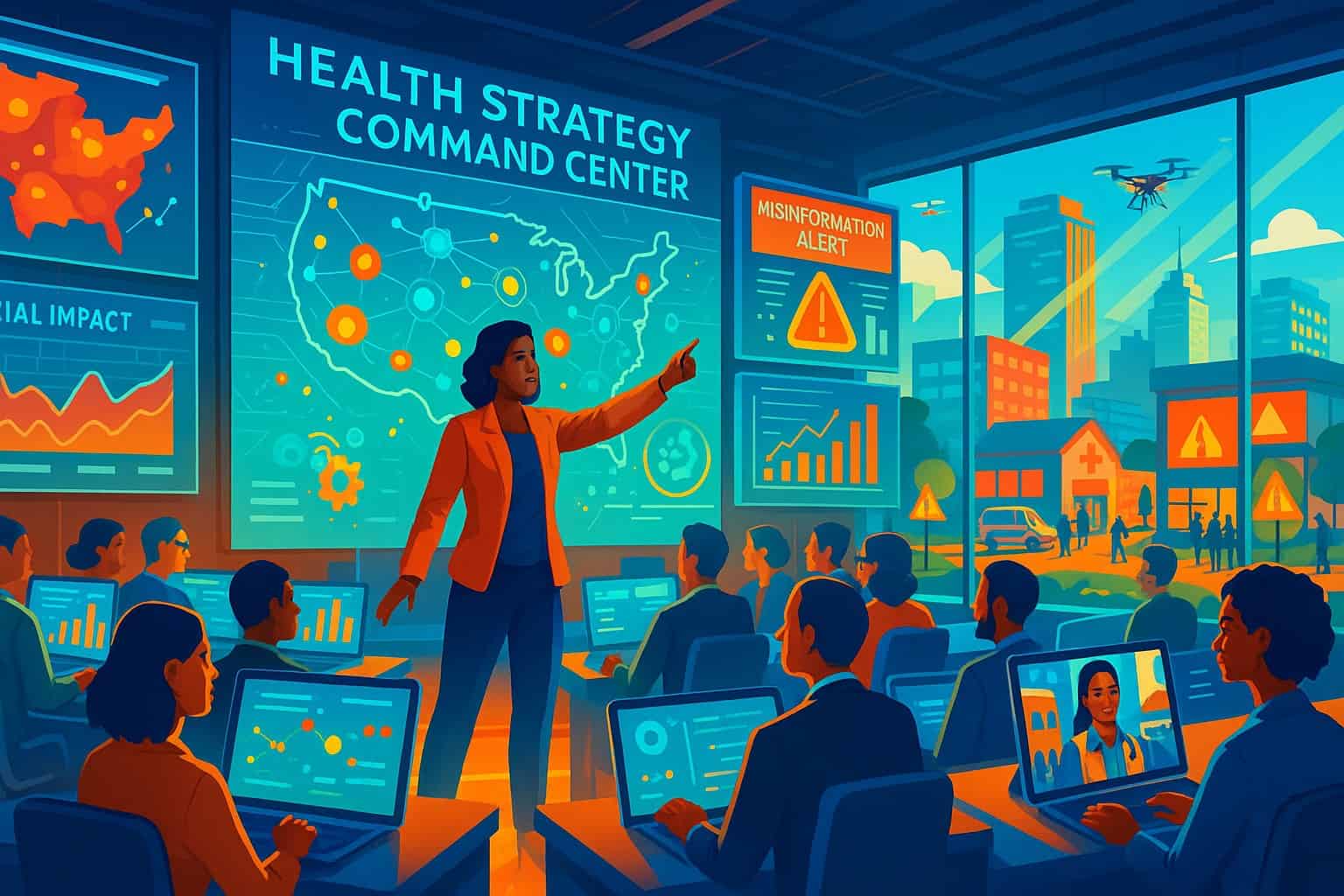Table of Contents
Introduction – No Leader is Perfect!
“What’s my blind spot, Doc?” asked a healthcare titan as we sat down years ago. As a strategic health leadership veteran, I was amused and surprised. Leaders are expected to appear competent while hiding their inevitable flaws. However, this legend was actively seeking to expose his weaknesses. That humility masterclass has stuck with me in retirement.

Trying to be a perfect leader is pointless. Humans are complex, with strengths, weaknesses, blind spots, and biases. Any great leader’s biography is a tapestry of triumphs, blunders, brilliance, and cluelessness. The best ones embrace this truth and leave an indelible mark on their organizations and communities. They know that self-awareness—the ability to see ourselves clearly and honestly—is the key to long-term success.
But how do leaders navigate this treacherous self-discovery terrain?
Commit to Climb The Leader Self Development Ladder
Self-awareness is a lifelong mountain climb. It’s about exploring your mind’s jungle, uncovering secrets and facing uncomfortable truths. Assess your strengths, weaknesses, quirks, and eccentricities. Be honest about your flaws and what makes you tick. Self-awareness isn’t self-criticism; it’s understanding your whole self.
Your Compass is Gratitude as a Leader
While acknowledging your flaws is important, celebrate your strengths! Gratitude drives us and guides us through the darkness. Recognize your unique talents, skills, and wisdom. Your self-improvement journey starts with your strengths.
Seek Honest Mirror
We all have blind spots, where our perception differs from reality. Unfortunately, we can’t always see them. Honest feedback helps there. Find trusted mentors, colleagues, and coaches who will reflect, not magnify. Hear their observations, even the painful ones. They want to help you be your best, not hurt you.
Beware the Bias Bubble
Mentors, like everyone else, have biases and blind spots. While they may love you, they may not see all your flaws. Broaden your search, get diverse feedback, and challenge the status quo. Remember that new perspectives often yield the best insights.
Emphasize “How,” Not “What”
Finding your blind spots is just the beginning. Real magic happens when awareness becomes action. Develop two or three soft skills to improve your leadership. Choose areas that will impact your team and organization, such as improving communication, accepting feedback, or delegating. Personal growth is a process, not a goal. Celebrate small wins, learn from setbacks, and keep improving as a leader, colleague, and person.
Questions to Identify your blind side
- The Socratic Mirror: Ask yourself, “What would my harshest critic say about my leadership?” List their responses, even if they sting.
- The 360° Feedback Loop: Seek anonymous feedback from colleagues, superiors, and even those you perceive as “below” you. Vulnerability breeds vulnerability, and honest insights will emerge.
- The Performance Gap: Compare your self-perception with how others view you. The discrepancies are your blind spots waiting to be illuminated.
- The Missed Opportunities: Reflect on situations where things went south. Were there patterns in your behavior that contributed?
- The Unspoken Truths: Pay attention to what people hesitate to say directly. Their unspoken reservations often hold the key to your blind side.
Learning Activities
- Shadowing: Attach yourself to a leader you admire and observe their interactions, decisions, and communication style.
- Role-Playing: Simulate challenging scenarios with a trusted friend, practicing different approaches and receiving feedback on your blind spots.
- Journaling: Reflect daily on your interactions, emotions, and decisions. This introspection can reveal patterns and hidden biases.
- Mentorship: Seek guidance from a seasoned leader who can offer objective feedback and support your growth journey.
- Reading: Immerse yourself in books and articles on leadership development, focusing on areas you want to improve.
Remember, self-awareness is not a destination, but a lifelong journey
Like peeling back the layers of an onion, each revelation brings insights and opportunities for growth. It’s about embracing the whole self, the light and the shadows, and using that knowledge to become a more empathetic, effective, and inspiring leader.
- Self-awareness is a marathon, not a sprint. Don’t expect overnight transformation, but celebrate each step of the journey.
- Embrace discomfort. Growth often requires venturing outside your comfort zone, confronting your flaws and biases head-on.
- Be kind to yourself. You’re not aiming for perfection, just progress. Acknowledge your mistakes, learn from them, and keep moving forward.
- Develop a Personal Leadership Ethos.
References
- “Emotional Intelligence 2.0” by Travis Bradberry & Jean Greaves: Examines emotional intelligence and its impact on leadership. It offers emotional management, relationship building, and conflict resolution strategies for self-awareness and growth.
- “The Five Dysfunctions of a Team” by Patrick Lencioni: This book outlines the five behaviors that hinder teamwork and provides practical advice for fostering trust and psychological safety. It stresses self-awareness and communication for a healthy and productive workplace.
- “The Leadership Gap” by Lolly Daskal: This book challenges traditional leadership views and emphasizes self-aware, adaptable, and committed to continuous learning as effective leaders. It offers practical advice on developing these traits and becoming a better leader.
- Brené Brown’s “Dare to Lead” examines the importance of vulnerability in leadership and its potential to foster trust and connection. Brown believes vulnerable leaders foster self-awareness and authentic leadership, creating a positive and productive workplace.
About the Author
I am passionate about making health a national strategic imperative, transforming and integrating health and human services sectors to be more responsive, and leveraging the social drivers and determinants of health (SDOH) to create healthier, wealthier, and resilient individuals, families, and communities. I specialize in coaching managers and leaders on initial development, continuously improving, or sustaining their Strategic Health Leadership (SHELDR) competencies to thrive in an era to solve wicked health problems and artificial intelligence (AI).
Visit https://SHELDR.COM or contact me for more BLIP-ZIP SHELDR advice, coaching, and consulting. Check out my publications: Health Systems Thinking: A Primer and Systems Thinking for Health Organizations, Leadership, and Policy: Think Globally, Act Locally. You can follow his thoughts on LinkedIn and X Twitter: @Doug_Anderson57 and Flipboard E-Mag: Strategic Health Leadership (SHELDR)
Disclosure and Disclaimer: Douglas E. Anderson have no relevant financial relationships with commercial interests to disclose. The author’s opinions are his own and do not represent an official position of any organization including those he consulted. Any publications, commercial products or services mentioned in his publications are for recommendations only and do not indicate an endorsement. All non-disclosure agreements (NDA) apply.
References: All references or citations will be provided upon request. Not responsible for broken or outdated links, however, report broken links to [email protected]
Learn more here:




